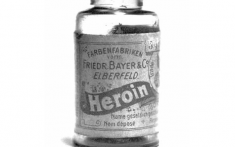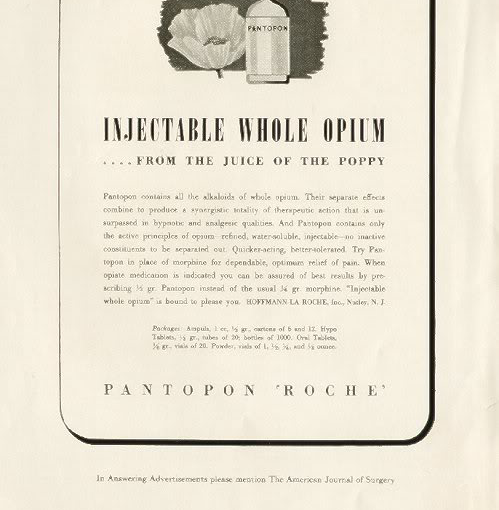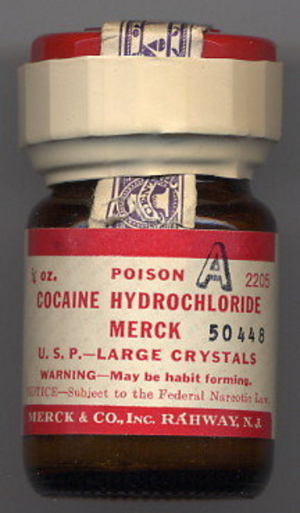Anthony Gucciardi
Activist Post
Would you like some Bayer Heroin for that cough? How about some cocaine for that back pain? It sounds truly insane now, but for decades major drug companies like Bayer were peddling off diacetylmorphine (known as heroin) as a powerful pharmaceutical method of treating coughs, curing morphine addiction (seriously), and just about everything else. Better yet, virtually all of these products were proudly advertised in the prestigious American Journal of Surgery.
Even following the subsequent ban on heroin being sold as a drug by Bayer after roughly 26 years of being sold to the public as a ‘scientific’ medical cure, drugs were created to mimic heroin and sold to satiate the rabid market for the heavily addictive drug. But Bayer’s heroin product is not the end of the truly ridiculous vintage Big Pharma products that dominated the medical community for decades upon decades.
Here are 3 vintage ‘scientific’ Big Pharma products that are guaranteed to shock you:
The creator of the first anti-depressant, which was removed in the early 60s due to extremely toxic side effects, Roche also had a popular product known as ‘Injectable Whole Opium’. Displayed in the American Journal of Surgery for readers to purchase, the injectable opium offers ‘dependable pain relief’ among other health benefits. The 1940s injectable opium ad states that the product is ‘bound to please you’.
2. Heroin by Bayer
Ironically sold as a cure for a host of ailments including morphine addiction, this horrendously addictive Bayer drug was sold to the public for 26 years before the United States congress banned its ability to be sold, manufactured, or imported. Before that, the Harrison Narcotics Tax Act simply allowed for Bayer to sell heroin as a prescription drug or really for any medical purpose. It wasn’t until 1925, however, that the League of Nations’ Health Committee banned heroin (diacetylmorphine) — taking 3 years to fully take effect.
As a result, ‘designer’ heroin drugs were created to cheat the system and make mass profits off of the addicted consumers who were demanding more heroin. They were successful all the way into 1930 until the same Committee took action. Bayer marketed the heroin in combination with aspirin and lycetol:
3. Merck Cocaine
Pioneering the commercial creation of morphine for the global market and achieving massive financial gain, Merck also was a major player in the production of cocaine. In alliance with cocaine user Sigmund Freud, Merck created pharmaceutical cocaine and peddled it throughout the emerging markets to drug users. Keith Richards is also apparently a fan of pharmaceutical cocaine, previously hooked on heroin and a host of other drugs as well.
Outside of these pharmaceutical creations, other substances and products like DDT and Agent Orange are also shining examples of “100% proven safe” and ‘scientifically validated’ items that later turned out to harm or kill hundreds of thousands. The wheel of medical science continues to spin, now with GMOs, artificial sweeteners, high-fructose corn syrup and much more. Putting mega corporations in charge of protecting our health over profits will ultimately lead to ‘groundbreaking discoveries’ decades after the damage has been done surrounding harmful ingredients and products that were ‘proven safe’ by bought and paid for medical research.
Is it any coincidence that the new modern era of pharmaceutical drugs by these same companies actually kill more than now-illegal drugs like cocaine and heroin that they originally introduced into the system?
Explore More:
- More Deaths from Pharmaceutical Painkillers than Cocaine and Heroin Combined
- UK ‘Drug-Driving’ Law Ignores Far Deadlier Legal Drugs
- Is there Really a Difference Between Legal and Illegal Drugs?
- 22 Million Americans Use Illegal Drugs
- How Big Pharma Got Americans Hooked on Anti-Psychotic Drugs
- FDA Looking to Ban B6 Supplements, Give Boost to Big Pharma
This article first appeared at Natural Society, an excellent resource for health news and vaccine information.






Be the first to comment on "3 Vintage ‘Scientific’ Big Pharma Drugs that Contained Ingredients Like Heroin"